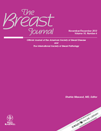Long-Term Outcome of Breast Cancer Patients with One to Two Nodes Involved – Application of Nodal Ratio
Abstract
Abstract: Nodal ratio (NR) is defined as the number of involved nodes to the number of nodes examined. There is limited information on the application of NR on population data. Previous reports in breast cancer generally analyzed one to three positive axillary nodes as a single group. This study investigates whether one to three positive axillary nodes is a homogeneous group in prognosis by comparing one to two positive nodes to three positive nodes. The population-based registry of a Canadian province from 1981 through 1995 was searched. As the reliability of nodal assessment depends on the number of nodes sampled, we also studied the subgroup of patients with greater than or equal to eight nodes dissected. Of a total of 5,996 breast cancer patients, 1187 had one to three positive axillary nodes. The 263 patients with three positive nodes compared to the 924 patients with one to two nodes fared worse with a significantly reduced cause-specific survival (CSS) and overall survival (OS). Patients with one to two positive nodes had similar CSS (p = 0.31) and OS (p = 0.63). Among those with greater than or equal to eight nodes dissected, there were 677 patients with one to two positive nodes. CSS and OS were not significantly different between one versus two positive nodes (p = 0.16 and 0.34, respectively), but with NR, the corresponding p values were 0.0068 and 0.08, respectively. The cutoff value of NR 0.15 was found to be most useful and confirmed by the validation dataset. NR is able to segregate patients better than the absolute number of positive nodes used in the current staging system. NR should be incorporated into the staging system.




